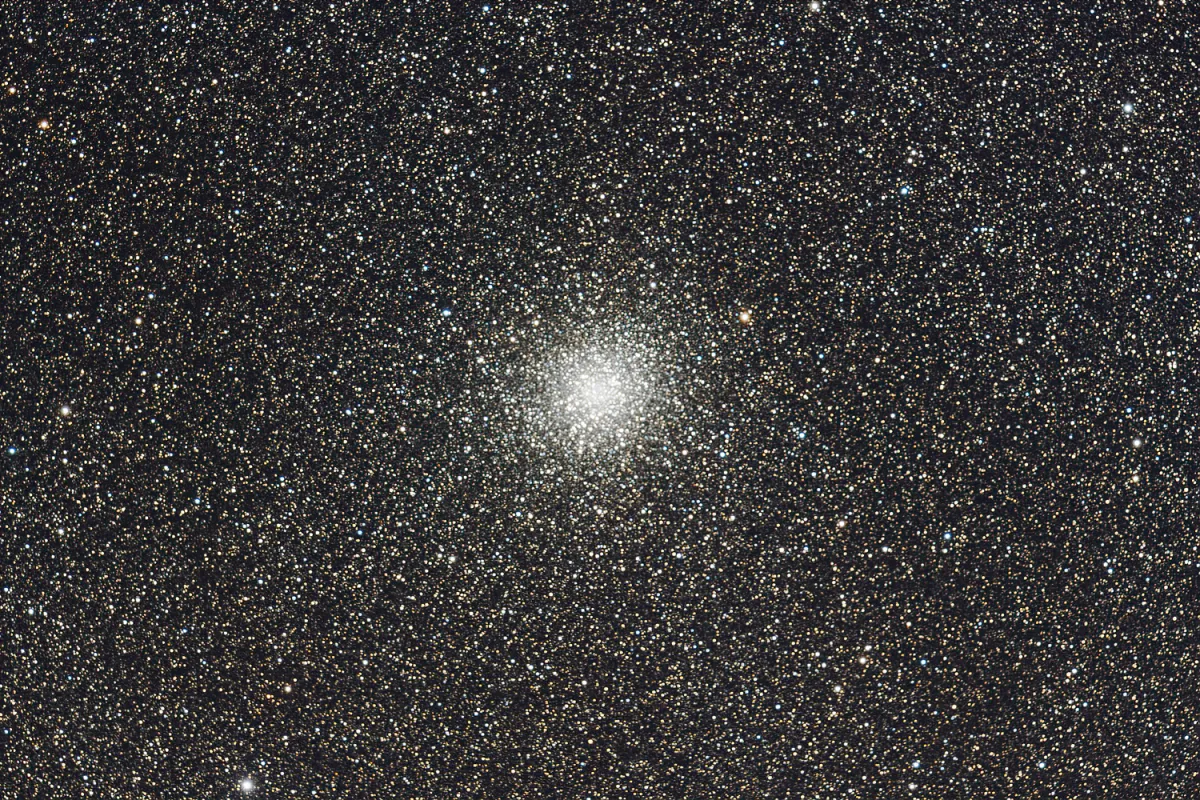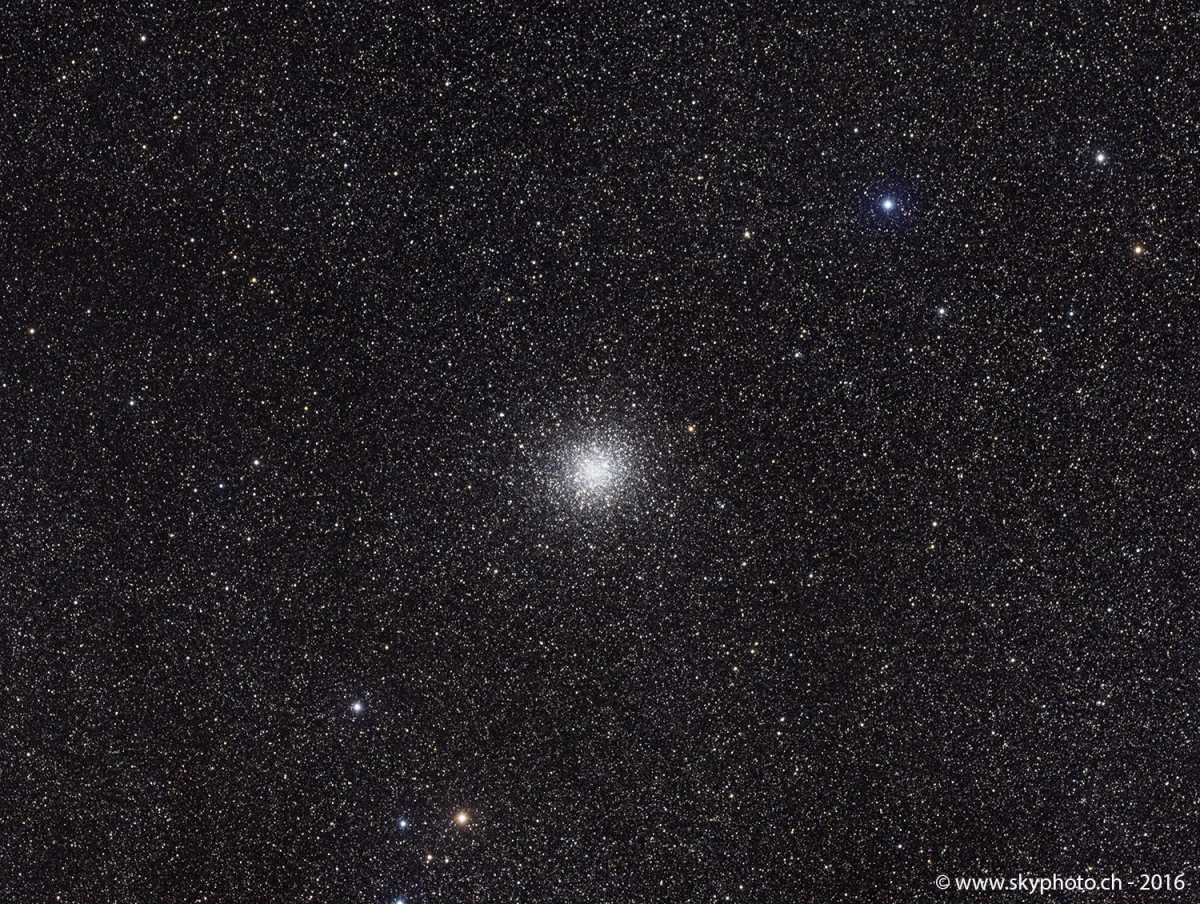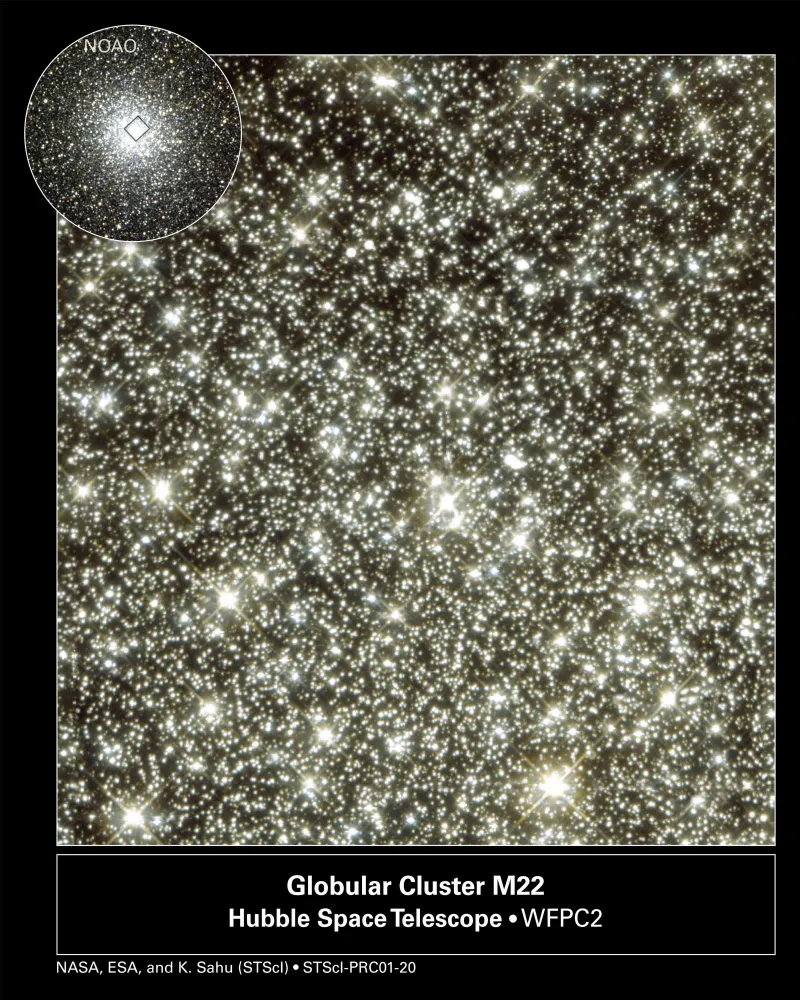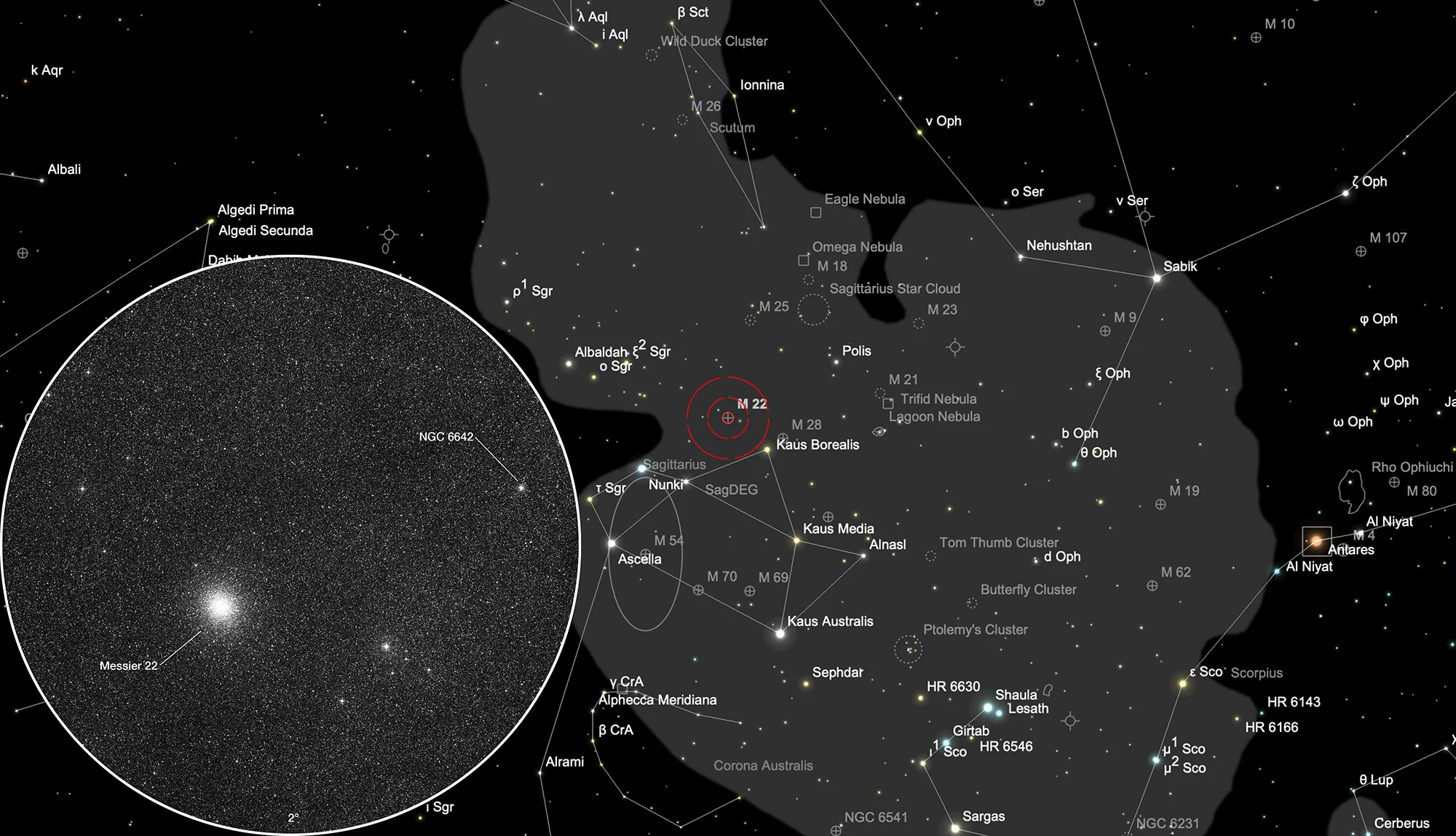Globular Clusters Messier 22 & NGC 6642


History
Messier 22 is one of the most magnificent globular clusters in the entire sky and even exceeds M 13 in the constellation Hercules in terms of size and brightness. M 22 is only surpassed by ω Centauri and 47 Tucanae.
The discovery of M 22 is often attributed to the obscure German astronomer Abraham Ihle in 1665. Almost nothing seems to be known about Ihle. It was even believed that the name was a misprint of «Hill». Admiral Smyth mentioned the fact that Abraham Hill was a member of the First Council of the British Royal Society and dealt only superficially with astronomy. Hevelius seemed to have noticed the cluster before 1665. Halley mentioned M 22 in 1716 and LeGentil observed it in 1747 with an 18 feet focal length telescope and described it as «very irregular, long-haired, and scattering a kind of rays of light in all directions». In 1752 Lacaille compared M 22 with the nucleus of a comet and Messier finally saw the 22nd object on his list in 1764 as «round nebula without stars near 25 Sagittarii».
At the time, William Herschel was the first to recognize a dense cluster of faint stars in M 22. His son John described it as a «magnificent globular cluster, gradually getting brighter towards the centre, but not condensing into a core. All stars have two brightnesses: 10/11 and 15th magnitude, like one shell on top of the other. Larger ones Stars appear reddish».
Physical Properties
M 22 is one of the easiest globular clusters to resolve. The population is estimated at around half a million stars. The shape of M 22 is elliptical. There are about 30% more stars along the long axis than along the short axis. The long axis points in the direction of the position angle 25°. At least 32 short-period variable stars of the RR Lyrae type were counted in the cluster. Some longer period Mira-type ones do not appear to be real members of this cluster.

Without a doubt, M 22 is one of the closest globular clusters and is much closer than any cluster in the northern sky. The light from M 22 is weakened by about 1.8 magnitudes due to interstellar material, which makes accurate distance measurement difficult. Taking this into account, the distance is estimated to be around 9'600 to 10'000 light years. Determining the true diameter of the cluster is also not easy to determine because of the many fine stars. The cluster is believed to be about 50 light years in diameter. M 22 is also close to the main galactic plane and only one degree away from the ecliptic, so the cluster can occasionally be seen with a bright planet in the same field of view. [4]
Using the Hubble space telescope, Kailash Sahu (Space Telescope Science Institute, Baltimore, MD) and his colleagues examined 83'000 stars in the core region of the globular cluster for microlensing effects between February 22 and 15 June 1999. A microlensing effect occurs when the light from a background star is briefly focused by the gravitational field of a body moving past in the foreground and becomes brighter as a result. Such an event could be assigned to a brown dwarf star with about a tenth the mass of the Sun during the observation period. The background star became brighter by a factor of 10 over a period of 18 days and returned to its normal brightness. However, Sahu and his team discovered six other unexpected events in which a background star only rose by a factor of 2 for less than 20 hours and then fell again. This means that the foreground object had to be much smaller than a normal star. The mass was calculated to be about 80 earth masses. These could be orphan planets that have been snatched from their mother stars. It is estimated that they make up about 10 percent of the total mass of the globular cluster. Too numerous for wandering planets. What is it about? Further research is needed to clarify this. [242]
| Designation | NGC 6656 |
| Type | GCL (VII) |
| Right Ascension (J2000.0) | 18h 36m 24.2s |
| Declination (J2000.0) | -23° 54' 10" |
| Diameter | 32 arcmin |
| Visual magnitude | 5.2 mag |
| Metric Distance | 3.200 kpc |
| Dreyer Description | !!, globular, vB, vL, R, vRi, vmC, st 11…15 |
| Identification, Remarks | h 2015=3753; GC 4424; M 22; GCL 99; ESO 523-SC4 |
Globular Cluster NGC 6642
On 7 August 1784 William Herschel discovered a «faint nebula» which he listed as II 205 and described as «pretty bright, considerably large, irregularly extended, brighter in the middle.» [463] His son John Herschel first observed it on 1 July 1826 (sweep 30) from Slough in England and again on 28 July 1830 (sweep 275) where he listed it as h 2012 and wrote: «A beautiful little globular cluster of excessively minute stars, 60" diameter; seen in twilight. It must be pretty bright when seen in dark night. (Sky very pure.)» [466] Later from the Cape of Good hope on 27 June 1837 (sweep 793) he listed it as h 3749 and logged: «Globular cluster; pretty bright; round; gradually pretty much brighter in the middle; 2'; resolved into visible, but very faint small stars 15...16 m.» [11]
| Designation | NGC 6642 |
| Type | GCL (IV) |
| Right Ascension (J2000.0) | 18h 31m 54.3s |
| Declination (J2000.0) | -23° 28' 33" |
| Diameter | 5.8 arcmin |
| Visual magnitude | 8.9 mag |
| Metric Distance | 8.100 kpc |
| Dreyer Description | globular, pB, pL, iR, gpmbM, rrr, st 16 |
| Identification, Remarks | WH II 205; h 2012=3749; GC 4414; GCL 97; ESO 522-SC32 |
Finder Chart
M 22 is easy to find. It is located in the constellation Sagittarius, about 2.5° northeast of the star Kaus Borealis (λ Sagittarii, 2.82 mag). It can best be seen in the months of February to December. Then the constellation is highest above the southern horizon.
Visual Observation
400 mm Aperture: M 22 is a beautiful globular cluster consisting of coarse and fine stars right up to the centre. It is worth magnifying so far that the globular cluster fills the entire field of view. — 400 mm f/4.5 Taurus Dobsonian, Falera, 6. 9. 2024, Bernd Nies
